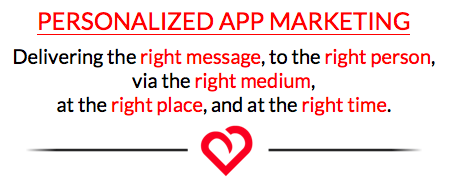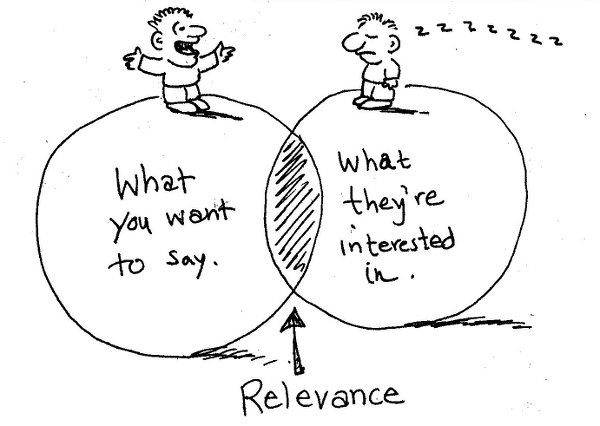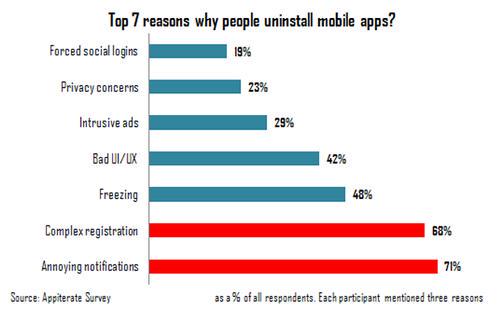The average person is exposed to as many as 5,000 marketing messages in a given day.
Just let that soak in for a second.

Source: Tony Shi Photography via Getty Images
Today, everywhere you look, there’s bound to be an ad. With an onslaught of obnoxious popups, subtle product placements, and everything in between, it’s a rare moment that we aren’t being told to buy this or download that.
This sense of advertisement bombardment has never been more evident than in mobile, where market forces are necessitating that apps should be free to download and use. (Which, of course, just means more in-app advertising to provide an alternative revenue stream.)
For the vast majority of us, these messages might as well be subliminal for all the effect they have. We are simply tuning them out as we get more accustomed to the nonstop barrage of advertisements. And in fact, studies have shown that you’re 279 times more likely to climb Mt. Everest than you are to click a banner ad, according to Business Insider.
Clearly, something isn’t working.
At Alchemer Mobile (formerly Apptentive), we believe there’s a better way to talk to your customers. A way that engages them on their terms and breaks through the clutter.
What I’m talking about is personalized marketing, and there’s no better stage for it than mobile.
What is Personalized App Marketing?

Personalized app marketing is delivering the right message, to the right person, via the right medium, at the right place and at the right time.
To break down this definition, we’ve come up with five questions to ask ourselves before executing on our messaging strategy:
1. Is your message relevant and valuable to your customer?
Did you know that consumers consider only 21% of brand communication relevant?
Delivering a relevant and valuable message is a sure way to help your communication stand out among the 5,000 advertisements a person sees each day. While deciphering what “relevant” means was once a guessing game, modern app analytics and research tools make it easier than ever to know exactly what messages resonate with your customers – either through asking them (via in-app surveys, feedback forms, or 1:1 messaging) or A/B testing a variety of messages.
It may seem like a trivial matter, but the framing of your message can make all the difference when it comes to how the recipient perceives it. For example, we’ve tested dozens of different ways to ask for ratings. In the process, we found that simply asking for a rating is far more effective than asking for a 5-star rating, as this can be perceived as presumptuous.

2. Are you targeting the right audience for your message?
Is your message one that everyone has to see, or is it one that only applies only to a particular segment of your customers?
In marketing, less is more. The fewer messages each customer receives, the more powerful each message becomes. Make each message count. Make each message relevant.
Segmentation is key to choosing the right audience. Using tools like Google Analytics or Alchemer Mobile (formerly Apptentive), you can segment your audience in an infinite number of ways: By device type, by operating system, by loyalty, by usage, by conversion, by lifetime value, etc.
When you segment your message by audience, you’re suddenly able to deliver a personalized customer experience. You’re now providing value to your customers, pulling them in to be engaged, rather than pushing unwanted content at them.

Imagine how much more effective—and how much better received—your customer satisfaction survey would be if you only delivered it to those who have enough experience with your app to give their feedback. Say, only those customers who have launched your app at least five times. Similarly, what if you could target a more granular event, such as prompting a help message to customers once you’ve detected a crash or a screen that won’t load? Both of these scenarios provide opportunities to break through the screen to improve the customer experience.
And that’s marketing worth tuning into.
3. Are you messaging in a way that respects the preferred communication style of your audience?
Do you have the insights to know exactly how your customers like to be messaged? Do they prefer “flash messages,” communication that is scannable and dismissible (e.g., a news alert or sale announcement), or do they prefer something more interactive and engaging (e.g., a survey, prompt, or a note full of deep-linked content)?
Your choice of medium—say, an in-app prompt, direct message, survey, feedback form, etc.—communicates a lot about your relationship with your customer. Find a format that works both as a vehicle for personalized app marketing and for the needs of your customer.
As a rule of thumb, all mobile messaging should be concise, optimized for mobile, and unintrusive. For more tips, check out our best practices on context marketing.
4. Are you messaging your audience at the best possible place?
Choosing the perfect location for your message is perhaps the best way to ensure that your personalized app marketing is relevant and valuable.
Your message should always relate to the app screen the customer is on when the communication is displayed.
For example, if you have an apparel retail app, wait until the customer has filtered your selection by gender before showing advertisements for any gendered clothing. Conversely, the Help menu probably isn’t the best place to launch a rating prompt. To relate your message to its location, step into your customer’s shoes and ask yourself what they’re looking for at each app screen, and how you can enhance their experience. That customer browsing your Help menu most likely has a question about your app. Instead of displaying a rating prompt, use this knowledge to start a two-way conversation with your customer for addressing that question.

Source: 360 Degree Technosoft
5. Are you delivering your message at the right time, and at the right frequency?
Let’s face it. No one wants to be prompted or messaged the moment they launch an app. Your customers launched your app for a specific purpose and don’t want to any interruptions until they have completed that task.
A well-timed message is a relevant message. Test your messaging strategy to ensure that you aren’t spamming your customers with a barrage of messages and that your click-throughs and open rates are the best they can be.
As a matter of rule of thumb, we recommend engaging customers at the end of their journey, not the beginning. Let your customers experience your app uninterrupted, and then connect with them – on an opt-in basis, and on their terms.
How’d You Do?

If you answered ‘yes’ to these five questions, you have a golden ticket to brand relevancy and personalized app marketing. By running through these five questions before you send that next message, you can ensure that your communication is relevant, valuable, and respectful. This, in turn, means higher conversion rates and happier customers.
For more on crafting the perfect message and establishing a non-intrusive pull marketing strategy, download our free guide: “Mastering the Five Pillars of Context Marketing.”

